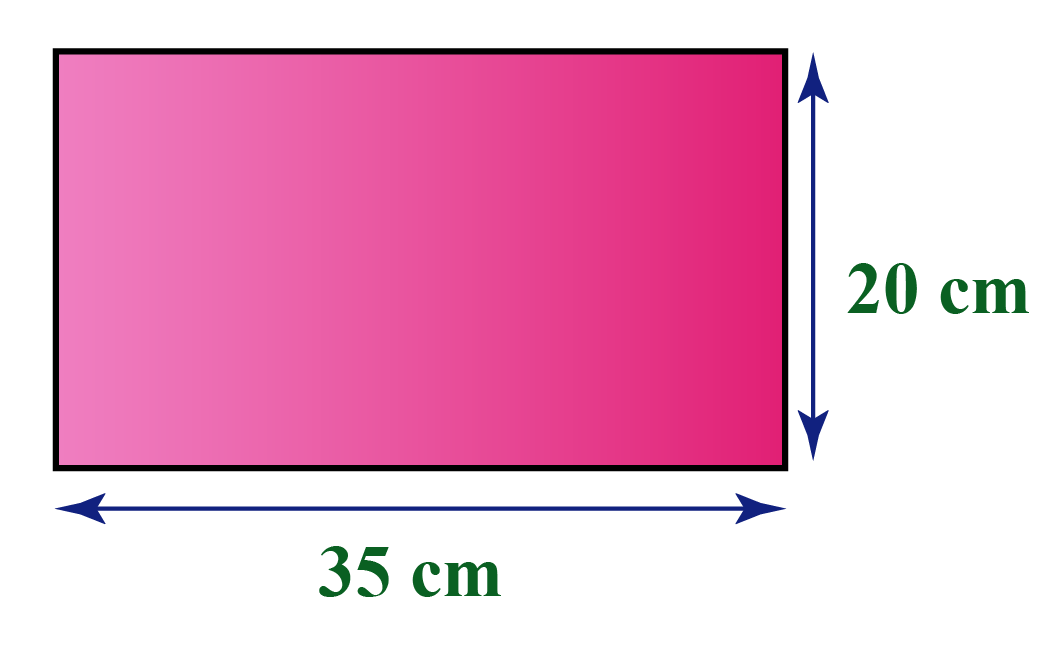
The formula states that \(A=l\times w\), so the area of the yard is \(30\text\). The length of the yard is 30 feet, and the width is 20 feet. This is a scenario where the area formula of a rectangle can be applied.

Do you have enough sod to cover the entire yard? Your yard has a length of 25 feet and a width of 30 feet. You want to determine if this is enough grass to cover the entire yard, so you need to compare the area of the sod to the area of your yard. You want to plant grass in your new backyard, and you currently have 645 square feet of sod available. In this case, our answer would be 640 m 2. Area is the result of multiplying two dimensions, length and width, which can be represented as a power of 2. The units associated with surface area will always be units squared. The area of the rectangle can be calculated by multiplying \(l\times w\), or \(32\times20\), which is 6,400. For example, the rectangle below has a length of 32 meters and a width of 20 meters.

A represents area, l represents length, and w represents width. When determining the area of a rectangle, the formula \(A=l\times w\) can be applied. Situations such as these will require the use of surface area calculations. Area calculations are made for scenarios such as determining the number of tiles needed to cover the bottom of a swimming pool, the amount of wrapping paper needed to wrap a gift, or the amount of square footage you have in your backyard. We disregard the negative solution, as you cannot measure a negative amount in real life.Calculating surface area is a skill that can be applied in many real-world situations. Therefore, 3 cm is the length of the smaller rectangle. In the third step, you plug the rest of the coefficients including the discriminant into the formula to find the solutions for x.įinally, these are the solutions. As you can see, it is a positive number, which means that the roots will be real. In the second step, you calculate the discriminant, which is the bit under the square root sign of the standard formula. The first step is to identify the coefficients a, b, and c as shown above. To find the length of the smaller rectangle, you simply have to solve the quadratic equation, using the standard formula. As you can see, we have a quadratic equation, which is the answer to the first part of the question. Subtract both sides by 21 to bring it over to the LHS. We simply plug the expressions of the individual areas of A and B into the expression A - B = 21.

The area of the small rectangle B is 2 × x, which is the multiplication of the length of its sides. The area of the large rectangle A is (2x+3) × x, which is the multiplication of the length of its sides.

If you subtract the area of the small rectangle from the area of the large one the resulting area shaded in yellow equates to 21. If the area of the large rectangle is A, and the area of the small rectangle is B, then we can write the expression above. AnswerĬutout area problems are very simple to solve. Show that 2x²+x-21=0, and calculate the length of the smaller rectangle. The small rectangle has a length x and width 2 cm. Now we can create the formula for the area of our tombstone shape: Area of a Tombstone Shape l w + r 2 2. Dividing by 2 will make it the area of a semicircle: Area of a Semicircle r 2 2. A small rectangle is missing from one corner. In this case, we only have half of a circle, so we need to modify our circle formula a bit. The diagram above shows a large rectangular piece of card of length 2x+3 and width x. I have designed the question so that the numbers can be easily calculated without a calculator. The final expression is of course a quadratic equation that you can solve using the standard formula. In this example question, there are two rectangles, and you simply have to subtract the area of the smaller rectangle from the area of the larger rectangle to get the answer.


 0 kommentar(er)
0 kommentar(er)
